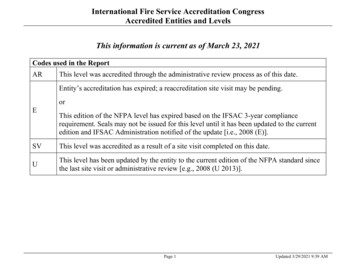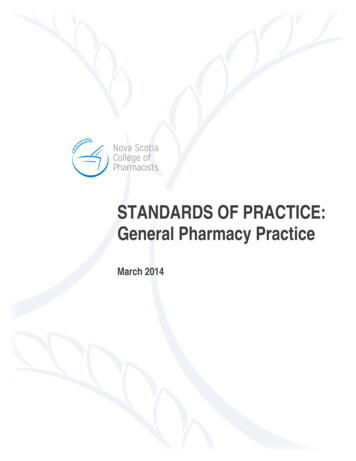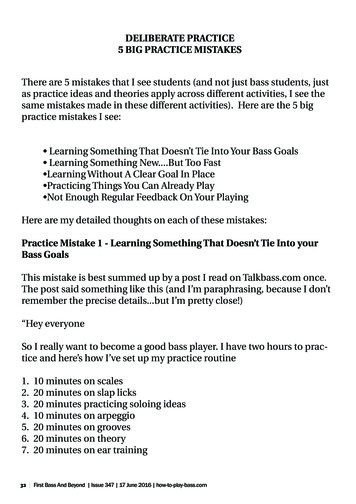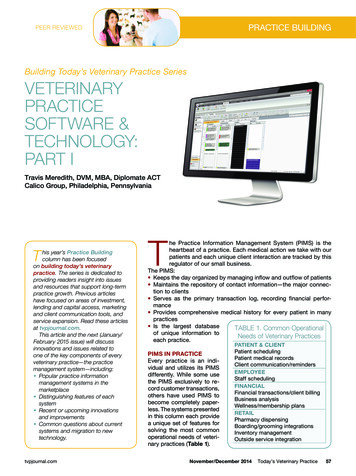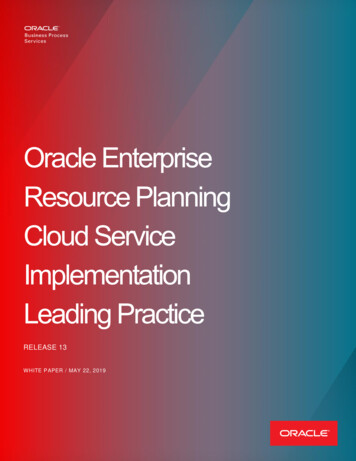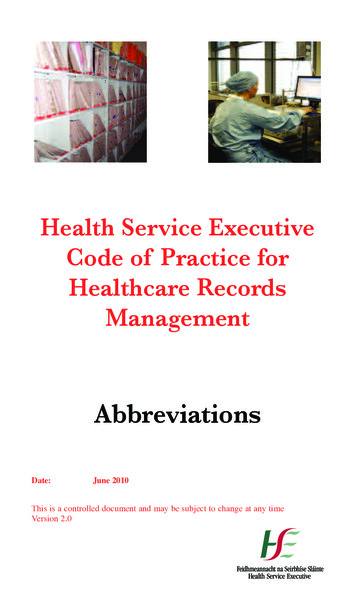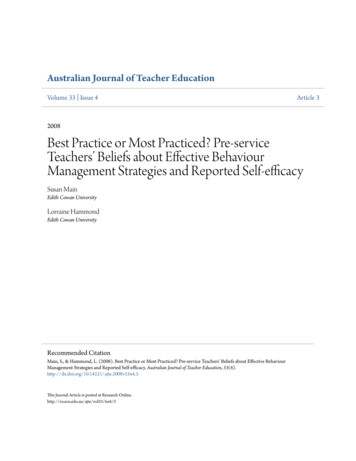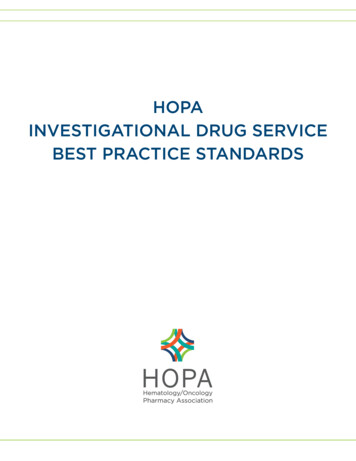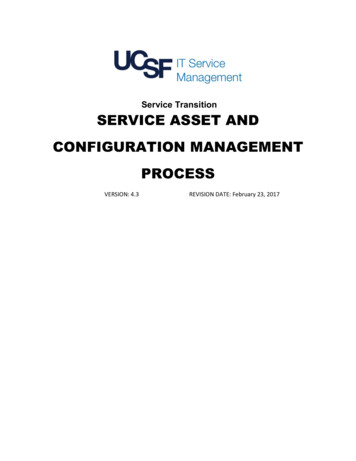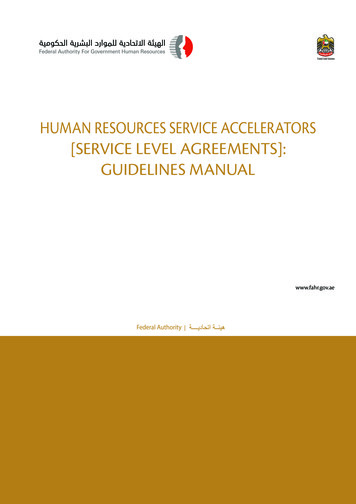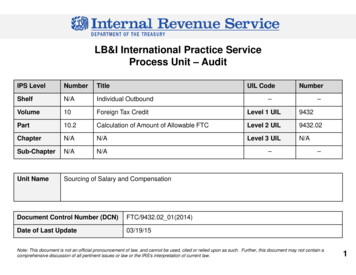
Transcription
DRAFTLB&I International Practice ServiceProcess Unit – AuditIPS LevelNumberTitleUIL CodeShelfN/AIndividual OutboundVolume10Foreign Tax CreditLevel 1 UIL9432Part10.2Calculation of Amount of Allowable FTCLevel 2 UIL9432.02ChapterN/AN/ALevel 3 UILN/ASub-ChapterN/AN/AUnit NameSourcing of Salary and Compensation––Document Control Number (DCN)FTC/9432.02 01(2014)Date of Last Update03/19/15Number––Note: This document is not an official pronouncement of law, and cannot be used, cited or relied upon as such. Further, this document may not contain acomprehensive discussion of all pertinent issues or law or the IRS's interpretation of current law.11
DRAFTTable of Contents(View this PowerPoint in “Presentation View” to click on the links below)Process OverviewDetermination of Process ApplicabilitySummary of Process StepsProcess StepsOther Considerations and Impacts to AuditTraining and Additional ResourcesGlossary of Terms and AcronymsIndex of Related Issues22
DRAFTProcess OverviewSourcing of Salary and CompensationProcess DescriptionThis process Unit applies to any U.S. individual taxpayer claiming a foreign tax credit offset on Form 1116 against the U.S. tax onforeign salary and compensation (whether an employee or an independent contractor). The purpose of this unit is to determinewhether an individual taxpayer properly sourced their worldwide income from compensation for services performed partly within andpartly without the United States for foreign tax credit purposes. This unit will cover the methods that are available to source theincome.Determining the source of income, U.S. or foreign, is essential in determining U.S. tax consequences for all individuals. In general, theUnited States taxes U.S. citizens and resident aliens on their worldwide income from whatever source derived. The Supreme Courthas held worldwide taxation is justified because the benefits of citizenship extend beyond territorial boundaries, as the U.S. seeks toprotect its citizens anywhere in the world (Cook v. Tait, 265 U.S. 47 (1924)). It does not matter where a U.S. citizen resides for theirincome to be taxable. If an individual taxpayer were to overstate their foreign source income, the amount of the foreign tax credit couldbe overstated on their federal income tax return.Example Circumstances Under Which Process AppliesAn examiner receives a case involving an individual taxpayer with one or more potential audit issues as follows: (1) the taxpayer failedto include all their earned and unearned income, (2) the taxpayer reported their net wages instead of their gross wages, (3) thetaxpayer failed to properly allocate their worldwide income, (4) the taxpayer failed to reduce their gross foreign source income on Form1116 (General Category (b)) for the foreign earned income exclusion amount that he or she reported on Form 2555 or Form 2555-EZ,(5) the taxpayer failed to properly apply any applicable treaty article provisions for FTC purposes. The examiner must determine if thetaxpayer accurately sourced their worldwide income as it directly affects the computation of the foreign tax credit limitation.This Process-Audit unit will not cover the following topics, as they are covered in separate units as follows: Sourcing of Fringe Benefitsfor FTC Limitation, Multi-year Compensation Arrangements Including Stock Options, Tax Equalization, Proper Foreign Source IncomeReporting, and Unique Income Sourcing issues of Seamen, Air Flight Crews, Outer Continental Shelf Workers Signing Bonuses(review the specific tax treaty and contact the Treaties IPN if questions arise).3Back to Table Of Contents3
DRAFTProcess Overview (cont’d)Sourcing of Salary and CompensationProcess DescriptionTo alleviate situations of potential double taxation, IRC § 901 Taxes of foreign Countries and of Possessions of United Statesallows, subject to limitations, a credit for foreign taxes paid or accrued by U.S. taxpayers. Under IRC § 904, the credit is limited to thatportion of the U.S. tax liability on worldwide income that is attributable to the taxpayer’s foreign-source income. Sourcing directlyaffects the computation of the foreign tax credit limitation. The limitation establishes a ceiling on the amount of foreign taxes that canoffset U.S. taxes and is designed to prevent U.S. persons operating in high-tax countries from claiming those higher foreign taxesagainst the U.S. tax on domestic income and tax on lower-taxed foreign income. The Code sources particular types of income byallocating them in whole or in part to the United States or jurisdictions outside the United States. The rules for determining the sourceof some types of income are based on the concept that income arises at the geographic location of the activity that produces it(statutory principle is the situs concept). The U.S. tax system contains rules to identify items of income (or expense) derived from U.S.or foreign sources. The sourcing of income rules are the foundation of the U.S. international tax system. The source rules and othergeneral rules relating to foreign income are contained primarily in IRC §§ 861 – 865 and Treas. Reg. §§ 1.861-1.865 Determination ofSources of Income.!CAUTION: A taxpayer may not get a double benefit by taking a foreign tax credit attributable to amounts excluded from grossincome under IRC § 911(a) foreign earned income exclusion, Treas. Reg. § 1.911-6(a) Disallowance of deductions, exclusions,and credits and Rev. Rul. 79-199 Foreign tax credit; foreign earned income exclusion.4Back to Table Of Contents4
DRAFTDetermination of Process ApplicabilitySourcing of Salary and CompensationTo determine if the sourcing of salary and compensation process applies, an examination of Form 1116 is required. The Form 1116 forsalary and compensation will be a “General Category” Form 1116 and Part I, line g, 1a should have wages or some similar descriptionlisted.CriteriaResources6103 Protected Resources Form 1116 Category (b) GeneralIncome Form 1040 Line 7 Salary, Wages,etc.Has taxpayer claimed use of an “alternative basis” to Form 1116, Part I, ling g, 1b.source their employee compensation income? Form 1040 Line 7 Salary, Wages,etc.Is the U.S. and foreign income sourced correctly onForms 1116?Has taxpayer filed a Form 1116 claiming foreign taxcredit on foreign source salary and compensation?Has taxpayer shown wages and salary (asemployee) or shown compensation for services asan independent contractor? Resource: Form 1040,Line 7 on Schedule C or C-EZ attached to Form1040. Form 1040, Line 7 and Schedule Cor C-EZ attached to Form 1040. Form 2555 or 2555-EZ5Back to Table Of Contents5
DRAFTDetermination of Process Applicability (cont’d)Sourcing of Salary and CompensationTo determine if the sourcing of salary and compensation process applies, an examination of Form 1116 is required. The Form 1116 forsalary and compensation will be a “General Category” Form 1116 and Part I, line g, 1a should have wages or some similar descriptionlisted.CriteriaResourcesDid the taxpayer claim exemption for Foreign EarnedIncome?See the IPS Units titled (Tax Home for Purposes ofIRC § 911, Bona Fide Residence Test for Purposesof Qualifying for IRC § 911 Tax Benefits, CalculatingForeign Earned Income Exclusion – Self EmployedIndividual, and Calculating Foreign Earned IncomeExclusion Employee), In-Process as of 02/2015. Tax Home for Purposes of IRC § 911 Bona Fide Residence Test forPurposes of Qualifying for IRC § 911Tax Benefits Calculating Foreign Earned IncomeExclusion – Self EmployedIndividual Calculating Foreign Earned IncomeExclusion Employee6103 Protected Resources6Back to Table Of Contents6
DRAFTSummary of Process StepsSourcing of Salary and CompensationStep 1Determine whether all salary and compensation (e.g., wages, bonuses, stock options, and allowances) are included onthe U.S. individual income tax return.Step 2Determine whether the taxpayer correctly sourced their total worldwide salary and compensation income between U.S.and foreign sources.Step 3Determine whether the taxpayer has sourced any bonus they may have received in the current tax year.7Back to Table Of Contents7
DRAFTStep 1Sourcing of Salary and CompensationStep 1: Determine whether all salary and compensation (e.g., wages, bonuses, stock options, and allowances) are included on theU.S. individual income tax return.Did the individual taxpayer include all their worldwide income? The examiner is looking for any difference of income between years.The examiner will want to follow up with the taxpayer If a significant difference is identified and unexplained.ConsiderationsPrior, Current, and Subsequent Year Analysis Compare current year income to prior, looking forany differences of income between the years.Look for changes in both amounts, source andtype of income received in the salary breakdown.Ask the taxpayer for an explanation for anydifferences. Do not rely on the foreign tax return toconfirm income. Foreign paystubs usually providemore information with regard to the compensationbreakdown. In some cases, the Examiner may want to obtainforeign tax-related information through Exchangeof Information (see IRM 4.60.1). Compare retirement plans. When a U.S. personparticipates in a foreign pension plan, it is likelythat the plan will not meet the U.S. domestic rulesfor qualified plans. The employee may be subjectto U.S. tax on the employer’s contributions to theforeign retirement plan and its earnings.Resources6103 Protected ResourcesRequest complete copies of: Employee and non-employeecontracts Prior and subsequent year incometax returns (U.S. & Foreign) Income Sourcing Schedule U.S. Foreign Foreign earnings statements orpaystubs Tax assessments and receipts IRM 4.60.1 Exchange of Information IRC 409A Inclusion in gross incomeof deferred compensation undernonqualified deferred compensationplans (U.S. & Foreign RetirementPlans) U.S. Model Treaty Article XVIII,para.48Back to Table Of Contents8
DRAFTStep 1 (cont’d)Sourcing of Salary and CompensationStep 1: Determine whether all salary and compensation (e.g., wages, bonuses, stock options, and allowances) are included on theU.S. individual income tax return.Did the individual taxpayer include all their worldwide income? The examiner is looking for any difference of income between years.The examiner will want to follow up with the taxpayer If a significant difference is identified and unexplained.ConsiderationsResources6103 Protected Resources Some treaties will allow deduction of thecontribution and deferral of tax on the earnings ofthe plan.9Back to Table Of Contents9
DRAFTStep 1 (cont’d)Sourcing of Salary and CompensationStep 1: Determine whether all salary and compensation (e.g., wages, bonuses, stock options, and allowances) are included on theU.S. individual income tax return.Did the individual taxpayer include all their worldwide income? The examiner is looking for any difference of income between years.The examiner will want to follow up with the taxpayer If a significant difference is identified and unexplained.ConsiderationsResourcesCompensation BreakdownCAUTION: Original documents are best. Ifphotocopies are made, ensure that you copythe entire document. It is recommended thatyou make the following notations on the backof the photocopy as it is important to establisha trail of evidence: 1) who copied it, 2) thedate it was copied, and 3) indicate from whomand how it was obtained.The Examiner will want to compare the travelrecords provided by the taxpayer with those travelrecords in the TECS Database.Request copies of: Travel records (U.S. and foreign)such as copies of passports Treas. Reg. 1.905-2(a)(2) Documentsshould be translated into English!6103 Protected Resources IRM 5.1.18.14 Treasury EnforcementCommunications System or TECSDatabase10Back to Table Of Contents10
DRAFTStep 1 (cont’d)Sourcing of Salary and CompensationStep 1: Determine whether all salary and compensation (e.g., wages, bonuses, stock options, and allowances) are included on theU.S. individual income tax return.Typical compensation information reported on W-2's or foreign reporting equivalentConsiderationsResources6103 Protected ResourcesThe process for sourcing income is dependent uponthe facts and circumstances surrounding each case.Generally, the source of services income dependson the location of the performance of the serviceunder IRC §§ 861(a)(3) and 862(a)(3). Fringebenefits received in connection with the performanceof services are included in income as compensation,unless they are paid for by the employee at fairmarket value or they are specifically excluded by taxlaw.Example-Overseas Assignment Contract:1. Compensation:A. Base SalaryB. Senior Executive Annual Incentive Plan(request a copy of the Annual IncentivePlan)C. Equity Compensation (request a copy ofthe Equity Compensation Plan)11Back to Table Of Contents11
DRAFTStep 1 (cont’d)Sourcing of Salary and CompensationStep 1: Determine whether all salary and compensation (e.g., wages, bonuses, stock options, and allowances) are included on theU.S. individual income tax return.Typical compensation information reported on W-2's or foreign reporting equivalentConsiderationsResources6103 Protected Resources2. Benefits:A. Health Insurance PlansB. Work Schedules/Holidays/Vacation(request a copy of the Expatriate Policy)12Back to Table Of Contents12
DRAFTStep 1 (cont’d)Sourcing of Salary and CompensationStep 1: Determine whether all salary and compensation (e.g., wages, bonuses, stock options, and allowances) are included on theU.S. individual income tax return.Typical compensation information reported on W-2's or foreign reporting equivalentConsiderations3.4.Resources6103 Protected ResourcesRelocation Benefits:A. Relocation AllowanceB. Work Permits/VisasC. Mobility BonusD. International Service Allowance or Costof Living Adjustment (Goods & ServicesAllowance)E. Housing AllowanceF. Other Benefits such as Transportation
Line 7 on Schedule C or C-EZ attached to Form 1040. Form 1116 Category (b) General Income Form 1040 Line 7 Salary, W ages, etc. Form 1116, Part I, ling g, 1b. Form 1040 Line 7 Salary, W ages, etc. Form 1040, Line 7 and Schedule C or C-EZ attached to Form 1040. Form 2555 or 2555-EZ
